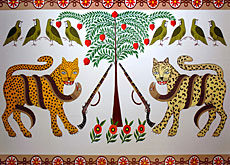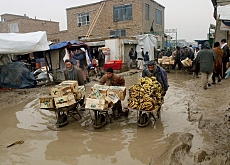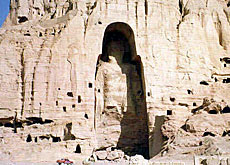Switzerland restores Afghan heritage

Swiss culture lovers have just a few days in which to view a collection of rare artefacts from Afghanistan before the exhibits are sent back to Kabul.
The Museum of Afghanistan in Exile, which has been safeguarding the items for six years, is to be closed down after Unesco gave the green light for the collection’s return.
The move marks the end of an era for the museum said to be the only one in Europe devoted to an Islamic country.
Housed in an unassuming building in the village of Bubendorf near Basel, at first glance the building does not seem much like a museum.
A look inside however reveals two floors full of artefacts, such as jewellery, furniture and lamps and embroidered textiles, some of them hundreds of years old.
Museum director and Afghan expert Paul Bucherer says the more than 1,600 items will be boxed up and sent back to Kabul after the museum closes its doors this weekend. They are expected to reach Afghanistan by spring next year.
Unesco says its conditions have been met for the return of the items to Afghanistan, which now has a democratic government but is still unstable.
Bucherer said the plan was always to repatriate the museum contents as quickly as possible.
“Now the Afghan government has made a request to Unesco and the Swiss government that these items should be brought back to Kabul to be on display in the Afghan national museum,” he told swissinfo.
“It’s also a political act to give back some parts of national identity, as identity is part of the peace and reconstruction of a country.”
Saving heritage
The museum was set up in 2000 after concerns were raised in Afghanistan by both the ruling Taliban and the opposition Northern Alliance that the civil conflict was destroying the country’s rich heritage.
Switzerland, seen as both neutral and trustworthy, was chosen as a base to house the exhibition. The collection has since swelled, also benefiting from private donations.
Apart from a few precious archaeological objects stored in a bank vault, most items relate to Afghan life before the conflict.
One such example is a typical wooden Afghan cradle. Before the war, every household had one, but as the violence escalated they were used for firewood.
“The elders tell the children that they used to lie in these cradles as babies but the children don’t know what they are. So when we bring this back, it will help shape part of their identity,” said Bucherer.
The museum’s most important piece is a wooden sceptre which belonged to the Emir Abdur Rahman Khan, the founder of modern Afghanistan.
A sign of power, it was handed down through the generations and was in use until the Communist revolution of 1978.
Mixed feelings
Bucherer, who has been researching Afghanistan for more than 40 years, says he will be sad to see the collection leave. “In view of the present political and ideological tension between the West and Islam it’s really a pity to lose such a place where an Islamic country’s culture is shown in a certain context,” he said.
“But I’m more proud that we have done our job, we have collected this material, we have protected it, kept it here in safety and now the last step is to take it back to its place of origin.”
What Bucherer will not miss is the financial burden of the museum. Run on a shoestring, it has relied mostly on private donations and grants. In fact, he still has to find the funds to cover the repatriation costs.
The expert told swissinfo that Unesco considered the museum’s work as a model for others. The cultural body hopes that this repatriation will lead the way for the return of other collections of Afghan objects to the country.
“I’m glad we have now come to the end of this activity,” Bucherer said. “This will show people that we did do something unique which is seen by Unesco as a pilot project for the protection of cultural values in future local conflicts.”
swissinfo, Isobel Leybold-Johnson in Bubendorf
The final event at the Museum of Afghanistan in Exile will take place on October 14. The museum will then shut its doors.
Bucherer also runs the Afghan Institute which researches Afghan history, culture and politics. His will continue working there.
He is also involved in a Swiss project to reconstruct the Bamiyan Buddha statues destroyed by Islamic militants in 2001 for being non-Islamic. A model of one reconstruction is in the museum.
The overthrow of the Afghan King Zahir Shah in 1973 has led to decades of unrest in the country. Soviet troops invaded Afghanistan but withdrew in 1989.
Afghan factions have since been fighting for control. The hardline Taliban emerged in 1994 and took over most of Afghanistan. It angered the international community by letting al-Qaeda leader Osama Bin Laden live there.
After September 11, 2001 attacks on the United States, the Taleban refused to hand him Bin Laden, paving the way for a new international conflict.
The Taleban administration fell in 2001, but adherents have regrouped, particularly in the south and east. A fledgling democratic government has been installed and is trying to forge national unity.

In compliance with the JTI standards
More: SWI swissinfo.ch certified by the Journalism Trust Initiative











You can find an overview of ongoing debates with our journalists here . Please join us!
If you want to start a conversation about a topic raised in this article or want to report factual errors, email us at english@swissinfo.ch.